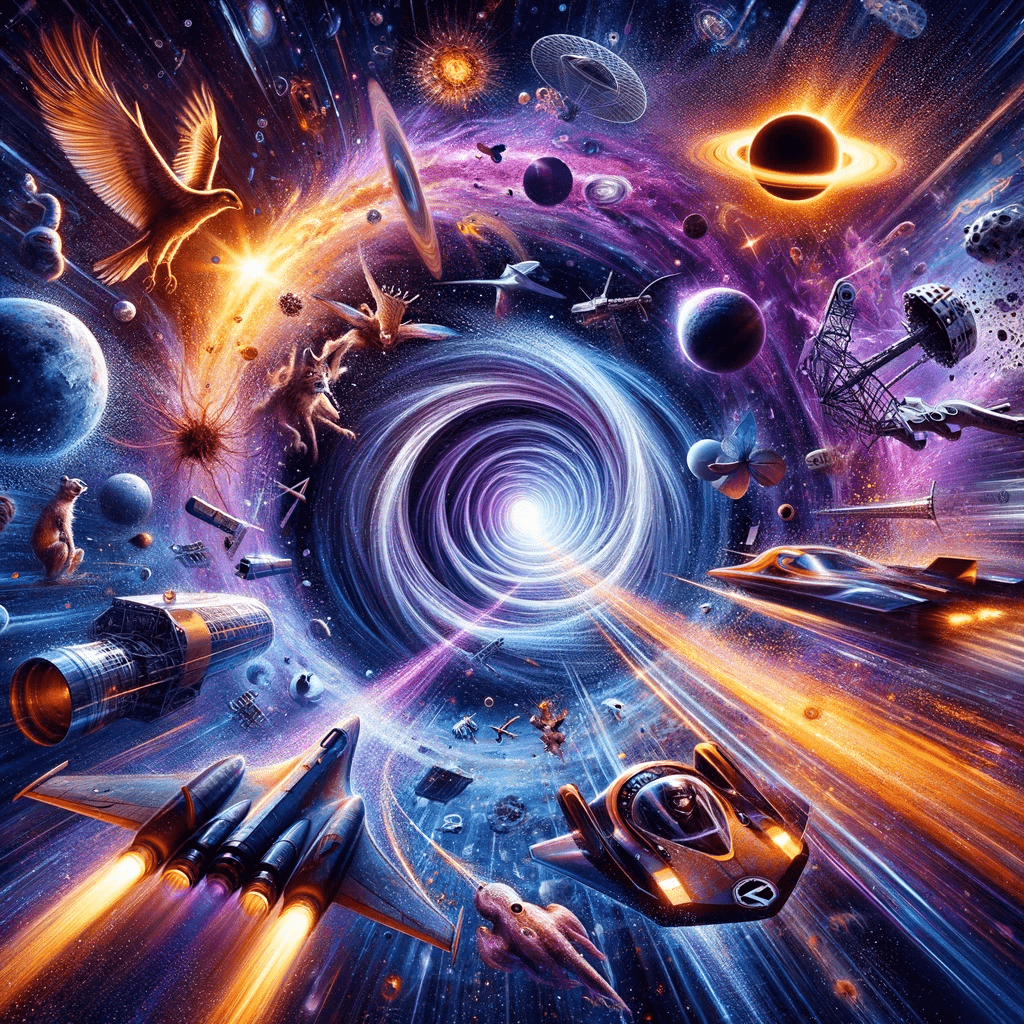Fastest Moving Objects within the Known Laws of Physics

The universe is a vast and intriguing playground where objects reach incredible speeds, often pushing the boundaries of our understanding of physics. From the natural phenomena that have shaped our cosmos to the cutting-edge technology that powers our fastest vehicles, the pursuit of speed has always fascinated humankind.
- Wormhole: Known as an Einstein-Rosen bridge, is a hypothetical feature of spacetime that would allow for faster-than-light travel between two distant points in the universe.
- Speed of light: The ultimate speed limit in the universe, approximately 299,792 kilometers per second (186,282 miles per second) in a vacuum.
- Cosmic rays: High-energy particles, mostly protons, traveling at nearly the speed of light. Their speed can reach up to 99% of the speed of light.
- Large Hadron Collider (LHC) particles: Subatomic particles accelerated to speeds very close to the speed of light, reaching 99.999999% of the speed of light.
- Neutron stars: Dense remnants of massive stars, with some neutron stars in binary systems orbiting their companion stars at speeds up to thousands of kilometers per second. Their speeds can reach up to 10% of the speed of light.
- UAPs/UFOs: Unidentified objects claimed to have reached speeds of up to 12,000 miles per hour (19,312 kilometers per hour) based on some observations. These claims remain unverified and subject to further investigation.
- Parker Solar Probe: A NASA spacecraft reaching speeds of up to 700,000 kilometers per hour (about 430,000 miles per hour) at its closest approach to the Sun.
- Helios 2: A spacecraft that reached a top speed of about 252,792 kilometers per hour (157,078 miles per hour) during its mission studying the Sun.
- The New Horizons probe: Reached speeds of about 58,536 kilometers per hour (36,373 miles per hour) during its flyby of Pluto in 2015.
- Apollo 10 Command Module: The fastest manned vehicle in history, reaching a top speed of approximately 39,897 kilometers per hour (24,791 miles per hour) during its return to Earth in 1969.
- North American X-43: An unmanned experimental hypersonic aircraft that reached a top speed of Mach 9.6 (7,346 miles per hour or 11,850 kilometers per hour).
- HTV-2 Falcon: A US experimental hypersonic glide vehicle that reached a top speed of around Mach 20 (15,345 miles per hour or 24,695 kilometers per hour) in flight tests.
- The Space Shuttle: During re-entry, the Space Shuttle reached speeds of around 17,500 miles per hour (28,164 kilometers per hour).
- The X-15: A rocket-powered aircraft that achieved a top speed of 4,520 miles per hour (7,274 kilometers per hour).
- The SR-71 Blackbird: A high-altitude, supersonic reconnaissance aircraft capable of reaching speeds of over 3,529 kilometers per hour (2,193 miles per hour).
- The Bloodhound LSR: A jet and rocket-powered car that achieved a top speed of 628 miles per hour (1,010 kilometers per hour) during testing.
- The Japanese Maglev train (L0 series): A magnetic levitation train that reached a top speed of 375 miles per hour (603 kilometers per hour) during a test run.
- The TGV (Train à Grande Vitesse): A French high-speed train that achieved a top speed of 357.2 miles per hour (574.8 kilometers per hour) during a test run.
- Bugatti Chiron Super Sport 300+: A production car that reached a top speed of 304.773 miles per hour (490.484 kilometers per hour) during a test run.
- Peregrine falcon: The fastest bird in the animal kingdom, capable of reaching diving speeds of over 385 kilometers per hour (240 miles per hour) when hunting its prey.
It is possible that an object traveling through a hypothetical wormhole could maintain a relatively slow speed. The concept of a wormhole, also known as an Einstein-Rosen bridge, is a hypothetical feature of spacetime that would allow for faster-than-light travel between two distant points in the universe.
The existence of an Einstein-Rosen bridge, also known as a wormhole, is allowed by the known laws of physics, specifically by the equations of general relativity. In fact, the concept of a wormhole was first proposed as a theoretical solution to Einstein’s field equations in 1935 by physicists Albert Einstein and Nathan Rosen.
The highest speed objects demonstrate the remarkable breadth of speed across the cosmos and our own world. From the fundamental speed limit of light to the extraordinary achievements of human engineering, these objects represent the pinnacle of velocity in their respective domains. As we continue to expand our understanding of the universe and push the boundaries of technology, it is likely that new objects and phenomena will challenge our notions of speed and inspire us to explore even further.

